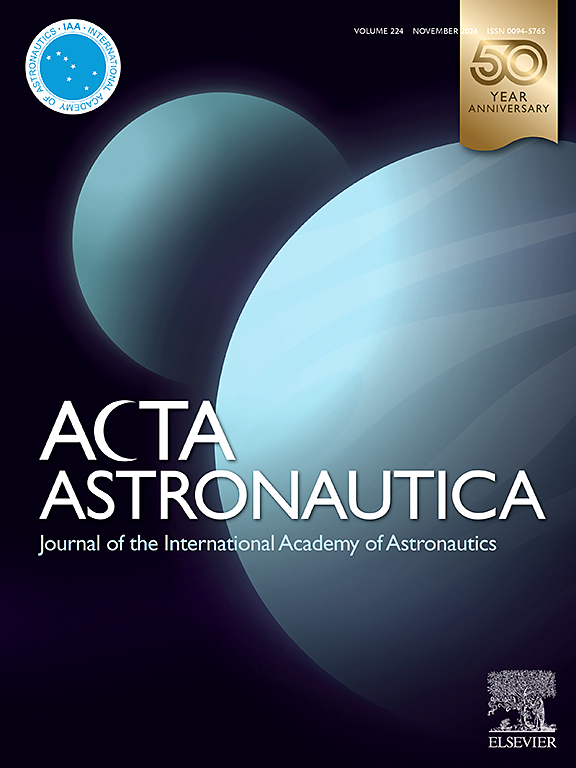Neural convex optimization for real-time trajectory generation of asteroid landings
IF 3.1
2区 物理与天体物理
Q1 ENGINEERING, AEROSPACE
引用次数: 0
Abstract
This study presents a neural convex optimization framework to achieve high-efficiency and high-accuracy trajectory generation for asteroid landings. The core innovation lies in integrating a deep neural network (DNN) based gravity model into the recently developed reduced space sequential convex programming (rSCP), thereby leveraging the complementary strengths of both methodologies. Two specific neural rSCP methods are developed using fixed-point iteration and Newton-type iteration, both of which can convexify the DNN-related dynamics effectively, while avoiding the computational burden of DNN-related Jacobians. Specifically, the fixed-point iteration-based method approximates state-dependent terms with reference solutions from previous iterations, inherently eliminating the need for Jacobian computations. The Newton-type iteration-based method leverages inexact Jacobian information derived from inexact Newton iterations to circumvent the requirement for exact Jacobian computations. Numerical experiments on a fuel-optimal asteroid landing scenario validate the effectiveness and computational advantages of the proposed methods.
求助全文
约1分钟内获得全文
求助全文
来源期刊

Acta Astronautica
工程技术-工程:宇航
CiteScore
7.20
自引率
22.90%
发文量
599
审稿时长
53 days
期刊介绍:
Acta Astronautica is sponsored by the International Academy of Astronautics. Content is based on original contributions in all fields of basic, engineering, life and social space sciences and of space technology related to:
The peaceful scientific exploration of space,
Its exploitation for human welfare and progress,
Conception, design, development and operation of space-borne and Earth-based systems,
In addition to regular issues, the journal publishes selected proceedings of the annual International Astronautical Congress (IAC), transactions of the IAA and special issues on topics of current interest, such as microgravity, space station technology, geostationary orbits, and space economics. Other subject areas include satellite technology, space transportation and communications, space energy, power and propulsion, astrodynamics, extraterrestrial intelligence and Earth observations.
 求助内容:
求助内容: 应助结果提醒方式:
应助结果提醒方式:


